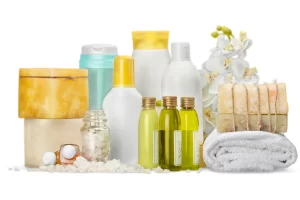Dissolving xanthan gum can be a bit tricky due to its unique properties, but following the right steps is crucial to ensure proper hydration and achieve the desired thickening or stabilizing effect. Here’s a detailed explanation of how to dissolve xanthan gum effectively:
Step 1: Disperse the Xanthan Gum Begin by sprinkling the xanthan gum powder over the surface of the liquid you want to thicken. Avoid dumping the powder directly into the liquid, as this can cause clumping. Use a whisk or a fork to gently distribute the xanthan gum evenly across the surface.
Step 2: Allow for Hydration Once the xanthan gum is dispersed, let it sit for a few minutes to allow for initial hydration. This step is essential as it allows the xanthan gum particles to absorb moisture and start swelling, making them easier to dissolve.
Step 3: Blend or Whisk Vigorously After the initial hydration period, begin vigorously whisking or blending the mixture to fully incorporate the xanthan gum. This step is crucial to break down any remaining clumps and evenly distribute the xanthan gum throughout the liquid.
Step 4: Heat the Mixture (Optional) For some applications, such as sauces or hot liquids, heating the mixture can help dissolve the xanthan gum more effectively. However, be careful not to overheat, as excessive heat can cause the xanthan gum to break down and lose its thickening properties.
Step 5: Allow for Complete Hydration Once the xanthan gum is fully dissolved, let the mixture sit for a few more minutes to allow for complete hydration. This step is essential to ensure that the xanthan gum has fully swelled and reached its maximum thickening potential.
Tips for Successful Dissolution:
- Use Cold or Room Temperature Liquids: Xanthan gum dissolves best in cold or room temperature liquids. Hot liquids can cause premature swelling and clumping.
- Add Xanthan Gum Last: If a recipe calls for multiple thickeners or stabilizers, add the xanthan gum last to prevent interference with other ingredients.
- Use a Blender or Immersion Blender: For thicker mixtures or larger batches, using a blender or immersion blender can be more effective than whisking for complete dissolution.
- Be Patient: Xanthan gum can take some time to fully hydrate and reach its maximum thickening potential. Allow for adequate hydration time before adjusting the amount used.
It’s important to note that a small amount of xanthan gum goes a long way. Overusing xanthan gum can result in an undesirable, slimy, or overly thick texture. Follow recipe guidelines or start with a small amount (usually 1/4 to 1/2 teaspoon per cup of liquid) and adjust as needed.
By following these steps and tips, you can effectively dissolve xanthan gum and leverage its unique thickening and stabilizing properties in a wide range of applications, from baking to sauces, dressings, and even gluten-free recipes.





